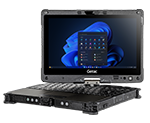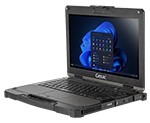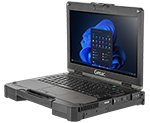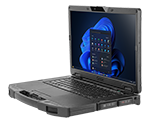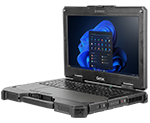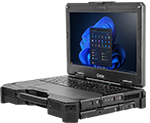Automotive technology and the IoT enable each other's development at a breakneck pace. As a result, the automotive industry is advancing faster than in recent history. However, while the design of traditional internal combustion engine (ICE) vehicles has matured to optimize performance (making the typical service issues well-understood), the number of automotive service technicians has decreased over time. Accelerated by the global labor shortage, this trend has hit the automotive industry especially hard.
Higher demand for maintenance and repairs with fewer automotive service technicians to perform them creates the need to enhance and expand mechanics' skills to adapt to these new technologies. With the move toward electrification, vehicles are becoming more integrated with users' smartphones. Phones can cast applications to the car via Bluetooth. This technology can also integrate into wearable devices that enhance the infotainment experience for vehicle occupants. OEMs are transitioning driving from an action to an experience. Here are some solutions and technology to help automotive service technicians keep up with the rapid evolution of the automotive industry.
One of the best ways automotive service technicians can increase their expertise is by growing their skills organically. Researching industry trends, regulatory/patent updates, brushing up on fundamentals to help with deep root-cause diagnoses, and learning new skills and techniques can help mechanics remain in touch with technological advancements.
Industry and OEM-specific news
Automotive has a rich history of product development rooted in science. Some examples of these improvements are automotive air conditioning, increased autonomous features like lane assist and cruise control, and enhanced safety features like tailored airbag deployment. Reading publications through digital channels like the Society of Automotive Engineers (SAE) and MotorTrend and consuming podcasts featuring daily updates can alert automotive service technicians about what's coming next. In addition, the OEMs sometimes take a disruptive or leadership role in shifting a trend in the industry. Therefore, it is essential to follow which OEMs are pioneering and leading in given areas. This can include software or data-defined mobility.
Regulatory Updates
Regulatory notifications can point to what's coming. A primary example of this is global regulations tightening around carbon emissions. Change in legislative rules drives action within the industry and fair competion, such as access to technical data. By seeking regulatory news from their region, technicians can better understand what's to come down the line and advise the customer proactively.
Patents
Patent searches are a slightly more complicated (but valuable) news source. Many new vehicular innovations intended for commercial sale first file patents to protect the developer's intellectual property (IP). Patents are a cue to tell the industry what is coming next. If there is an influx of IP filed in a given technology segment, it's a safe bet that technicians would be wise to understand the technical consequences for such.
Fundamentals
Learning how vehicle systems work is of course critical for automotive service technicians. This is especially with constant technological advancements that appear in newly launched cars. For example, learning the fundamentals of a vapor-compression refrigerant cycle for cabin comfort can help diagnose a problem with the HVAC system. Another approach would be understanding the basics of an EV's electric drivetrain and comparing it with an ICE. Understanding the technicalities of EV battery cooling or thermal management differences can better help technicians recognize a trend and correct the issue before a complete failure occurs.
New Skills or Certifications for Automotive Service Technicians
Automotive service technicians can pursue formalized training and certification programs to develop (and claim) expertise in a new area. Outside of the formal academy training provided by the OEMs, partnering with local schools or company training programs can teach new skills and spark innovative ways to leverage and augment their existing knowledge with the latest technology. Certification ensures the employer has peace of mind that their team of mechanics is compliant and technically up to date. This can also be used as a differentiator against less-trained competitors.
An example of this approach is to achieve Automotive Service Excellence (ASE) certification (regionally or world-class). This certification demonstrates expertise and mastery in automotive service and provides an extra confidence level for customers.
Technical Publications
Providing technicians training opportunities and educational tools is very helpful. Still, it is difficult to retain complex information once they get back to the workshop or place of work. Technology solutions are a great way to help with this. Equipping mechanics with workshop rugged mobile devices that can display the latest technical publications, OEM bulletins, and EPCs will ensure technicians will have the required information at their fingertips. In addition, these solutions can automatically incorporate updated regulations into the service process. This provides practical on-the-job training, and creates an informal quality assessment.
OEM Standards Updates
As a common practice during any vehicle entering the workshop, technicians often carry out a multi-point inspection. An electronic vehicle health check (EVHC) improves the legacy paper approach for checking on average 80 points of the vehicle with a digital check sheet incorporating all current OEM and Dealer standards. As the vehicle gets updates through the life of the model, the MPI checkpoints or measurement data may also change.
Takeaways
The automotive industry is changing rapidly, driven by technology innovation through the IoT, regulatory change, and electrification. Automotive service technicians have several paths to keep informed of their industry's latest changes and trends. Educational tools like digital technical publications and industry news, regulatory updates, and patent grants can help mechanics grow their expertise to increase effectiveness when encountering a new technology or spotting a trend.
While those paths are effective ways to improve technicians' capabilities during a labor shortage, the magnitude and speed of change create the need for a digital support solution to help augment the mechanics' newly-learned information.
Rugged tablets can be a reliable platform to display technical and OEM-related information. These devices help reinforce or continuously update mechanics with practical examples that act as case studies. This technology also enriches a mechanic's perspective on updates and changes. Doing so enables them to translate those learnings to customers for added credibility and peace of mind.
It is essential that mechanics, often the bridge between the automotive industry and the customer, keep up with regulations, product changes, and trends. Implementing a rugged tablet during service is a powerful way to capture and translate the changes into practice. Visit Getac's automotive solutions page to learn more about this technology.

